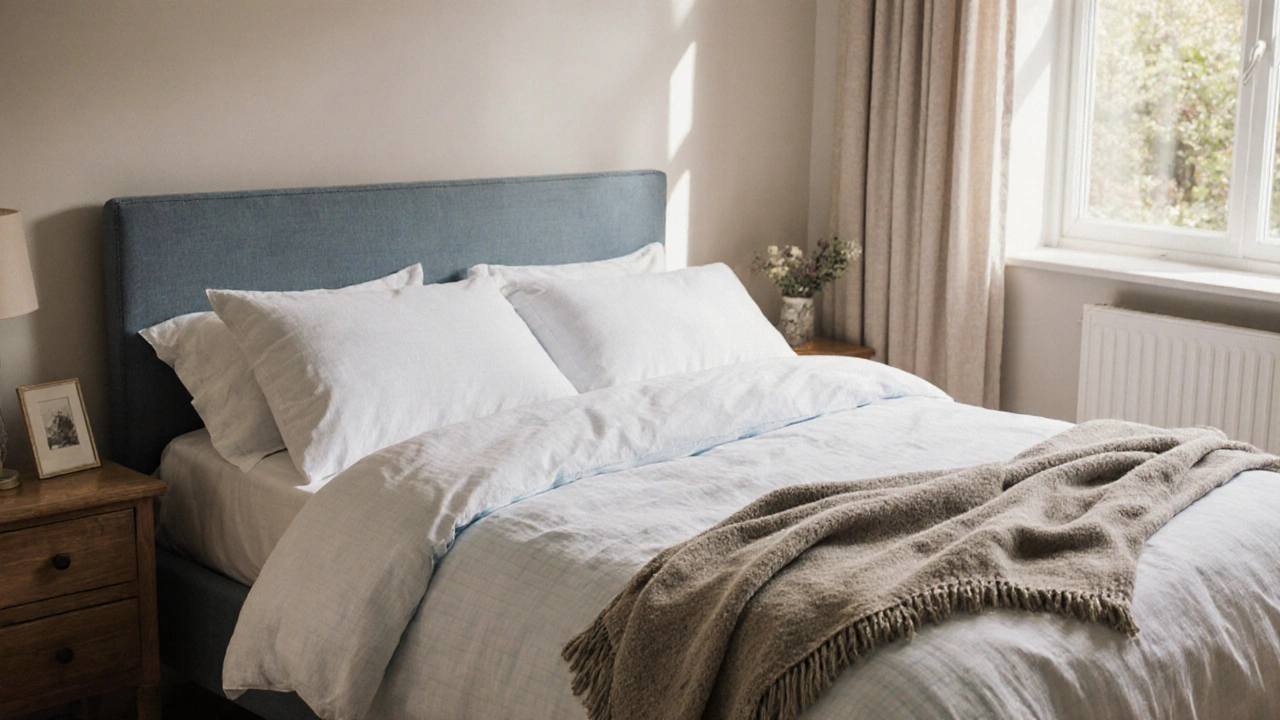Bedding Types: Choose the Right Eco‑Friendly Option for Your Bed
When you’re shopping for new bed linens, the words “cotton,” “linen,” and “bamboo” can feel overwhelming. The good news? Each material has a clear benefit, and you don’t have to sacrifice comfort for sustainability. Below we break down the main bedding types, point out the eco‑friendly picks, and give simple tips on what works best for different sleepers.
Classic Cotton vs. Sustainable Fibers
Cotton is the go‑to for many because it feels soft, breathes well, and is easy to wash. If you want a greener version, look for organic cotton. It’s grown without synthetic pesticides, which means less impact on soil and water. The price is a bit higher, but the durability usually offsets the cost over time.
Linen comes from flax and is naturally strong and breathable. It gets softer with each wash and stays cool in summer, warm in winter. Linen production uses far less water than conventional cotton, making it a solid eco‑choice.
Bamboo bedding feels silky and is excellent at wicking moisture. Most bamboo sheets are made from bamboo viscose, a process that can be chemical‑intensive, so check for certifications like OEKO‑Tex or FSC. When sourced responsibly, bamboo offers a renewable option because the plant grows fast and needs little water.
Tencel (lyocell) is a brand‑name fiber made from sustainably harvested wood pulp, usually eucalyptus. The closed‑loop production recycles almost all solvents, giving you a smooth, cool sheet that’s gentle on the planet.
How to Match Bedding to Your Lifestyle
If you sweat at night, go for breathable fabrics like linen or organic cotton with a thread count around 200‑300. Higher thread counts can trap heat, which isn’t ideal for hot sleepers.
Allergies? Look for hypoallergenic options such as bamboo or Tencel. Both resist dust mites and mold, keeping the sleeping surface healthier.
Eco‑warriors love certified fabrics. Look for labels like GOTS (Global Organic Textile Standard) for cotton, FSC for wood‑based fibers, and OEKO‑Tex for safety. These stamps guarantee the material meets strict environmental and health standards.
Finally, think about care. Most natural fibers get better with regular washing. Use a gentle, plant‑based detergent, wash in cold water, and tumble dry on low. This keeps the fibers strong and reduces your energy use.
Choosing the right bedding type doesn’t have to be a gamble. Start by identifying what matters most—temperature regulation, allergies, or a low‑impact footprint—and then pick the material that checks those boxes. With the right information, you’ll enjoy a cozy, eco‑friendly night’s sleep without compromising on style or comfort.
-

What Is the Meaning of Bedding? Understanding Its Purpose and Importance
Bedding isn't just sheets and pillows-it's a system designed for comfort, temperature control, and better sleep. Learn what it includes, how to choose the right materials, and why it matters for your health.
-

Understanding the 2 Main Types of Bedding: Sheet Sets vs Duvet Systems
Explore the two main bedding types-sheet sets and duvet systems-understand their components, benefits, care tips, and how to choose the right one for comfort and style.
-

Bed Sheets vs. Bedding: Key Differences, Tips, and Essentials for Every Bedroom
Learn the real difference between bed sheets and bedding. Discover what makes up each, how to choose them, and pro tips for creating a cozier bed.
